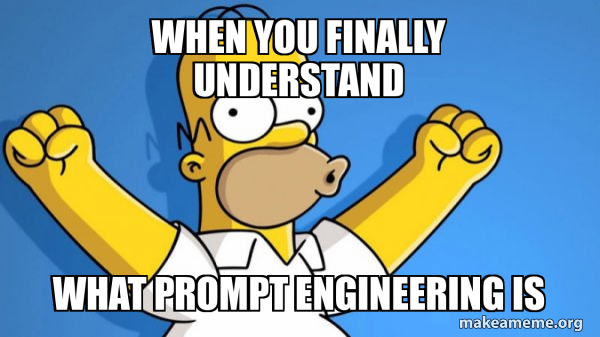
The rise of generative AI has introduced a peculiar new concept to the mainstream: “prompt engineering.” This notion that we must carefully craft perfect instructions to extract value from AI systems has created an unnecessary barrier between humans and the technology meant to serve them.
The irony is striking: tools designed to understand human language now require humans to learn a specialised way of communicating with them. This approach fundamentally misunderstands what makes AI valuable and how human-AI relationships can thrive.
The Evolution of “Prompt Engineering”
The term “prompt engineering” originated in AI research communities around 2020-2021 as researchers discovered that large language models like GPT-3 responded differently based on how queries were framed. Initially, it referred to relatively simple techniques for improving model outputs through careful phrasing, providing examples, or adding context.
What began as a practical research consideration has morphed into something far more elaborate. Today, “prompt engineering” encompasses complex frameworks, specialised certifications, and even dedicated job roles. Social media and professional networks overflow with “prompt engineers” selling templates and techniques purported to unlock hidden AI capabilities.
This evolution has transformed a straightforward concept—providing clear instructions—into what many perceive as an essential technical skill requiring specialised knowledge. The field has developed its own jargon: “few-shot learning,” “chain-of-thought prompting,” and “system prompts” have become terms that everyday users are somehow expected to understand.
The Artificial Barrier of Prompting
The concept of “prompt engineering” suggests that interacting with AI requires specialised knowledge—a secret language of instructions and commands that only the initiated can master. This creates a wedge between everyday users and AI tools, reinforcing the idea that meaningful AI interaction is reserved for those willing to learn this arcane skill.
This framing is not only exclusionary but often counterproductive. It transforms what should be a natural exchange into a technical challenge, where success is measured by how well you can anticipate and manipulate the AI’s responses.
The Conversation Alternative
The truth is much simpler: the most effective way to interact with modern AI systems is through natural conversation—just as you would with another person.
Rather than viewing AI interaction as a programming exercise, approach it as a dialogue. Ask questions, provide context when needed, and refine your discussion based on responses. When the AI misunderstands or provides incomplete information, clarify your intentions just as you would with a human colleague.
Three Principles for Better AI Interaction
Instead of complex prompt engineering techniques, consider these straightforward principles:
Be conversational.
Speak naturally rather than crafting artificial commands. Modern AI systems are designed to understand human language, not specialised syntax.
Be curious.
Ask follow-up questions. Request elaboration on points you find interesting or unclear. Allow the conversation to evolve organically rather than trying to extract everything in a single, perfect prompt.
Be patient.
Like any relationship, human-AI interaction improves over time as both parties learn to understand each other better. If you don’t get what you need immediately, refine your approach through dialogue rather than retreating to rebuild a prompt from scratch.
A Place for Technical Prompting
It’s worth acknowledging that formal prompt engineering does serve a legitimate purpose in specific contexts. For AI researchers, developers building LLM-powered applications, and technical teams optimising AI systems, understanding the nuances of prompt construction remains valuable. These professionals need to create consistent, reliable outputs at scale or push the boundaries of what AI systems can accomplish.
However, this technical knowledge shouldn’t be a prerequisite for everyday users seeking to benefit from AI. Just as you don’t need to understand how a search engine’s algorithms work to find information online, you shouldn’t need specialised prompt crafting skills to have productive interactions with conversational AI.
The distinction is crucial: prompt engineering belongs in the realm of AI development and optimisation, not in the everyday experience of using these tools.
The Path Forward
As AI continues to advance, the need for specialised prompting will likely diminish further. The systems themselves are increasingly designed to understand human intent without requiring precisely formatted instructions.
By setting aside the notion that we need to “engineer” our way into effective AI use, we can begin to develop more intuitive, accessible, and ultimately more productive relationships with these tools.
The best AI experiences don’t come from perfecting prompts—they emerge from genuine exchanges where both human and AI contribute to a shared understanding. In that sense, the future of AI interaction looks less like programming and more like conversation.
Ger Perdisatt is the Founder and CEO of Acuity AI, providing independent strategic advisory services that help organisations navigate their AI journey with confidence. For more insights on practical, value-driven AI adoption, visit www.acuityai.co